My first stop was in downtown Harrisburg, PA, which is an unending source of interesting and historic sites. My progress through the city was hampered only slightly by the 40th Annual Harrisburg Marathon, which happened to take place on the day of my tour. It was a glorious day for a marathon, but a few of the runners seemed to be glancing covetously in my direction as I motored by in top-down, sweat-free, BMW comfort. On the other hand, I was looking enviously at taught muscles and cardiovascular fitness.
For the record, there were 1,515 finishers in the race. I believe the two shown here in the foreground are Tim Clarke from Brooklyn, NY, who finished 12th overall (and 2nd in the 25-29 men's age group), and Patrick O'Rourke from Timonium, MD, who finished 13th overall (and 1st in the 40-44 men's age group). They averaged approximately 6 minutes and 18 seconds per mile for the 26.17-mile event. That is a faster pace than I sometimes accomplish in the Z4, when you count my photo stops…
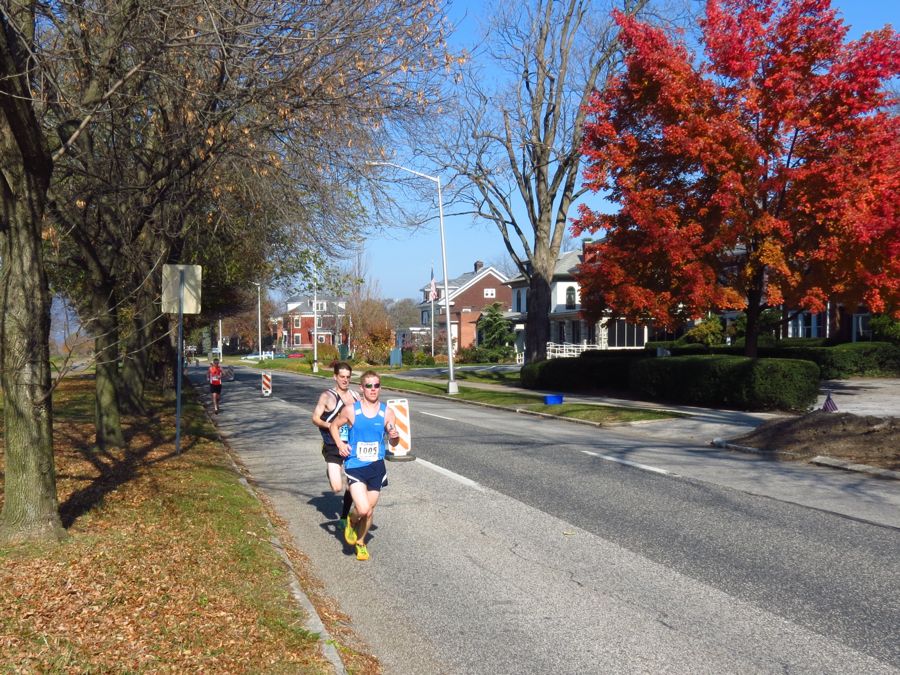
Front Street in Harrisburg borders the Susquehanna River and contains more stately homes and other buildings per square block than almost anywhere. This is the Temple Ohev Sholom, which was built in the 1850s.

Nearby homes were also impressive and even featured the occasional Fall Colors.


A few blocks farther north, a fortress-like structure caught my eye.

This huge building turned out to be the Moroccan-styled Zembo Masonic Shrine, also known as the Zembo Mosque. It was so large that I couldn't even find a vantage point that would allow me to photograph it in its entirety. Remarkably, it's only the 22nd-largest of the 191 shrines of the Ancient Arabic Order of the Nobles of the Mystic Shrine in North America. The word "Zembo" means "water spirit" in ancient Egyptian, although the Shriners were not able to decipher and confirm the hieroglyphics with the meaning of the name until 1977.


This postcard does a better job of capturing the building's glory than my backlit efforts. The shrine was built in 1930 and today is the home to numerous activities—including basketball games, swimming tournaments, weddings, and the Zembo Shrine Circus.

The circus has been performing here for the last 65 years. Its featured acts include the well-known Wallendas…
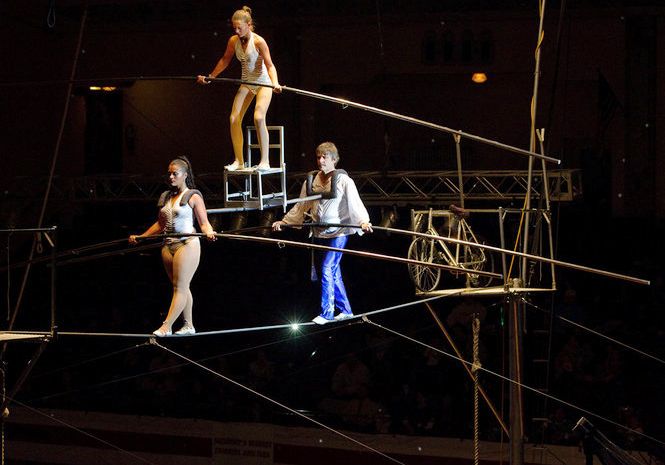
…and the not-so-well-known but equally stupendous Galaxy Girl, Tina Winn, whose family have been circus performers for five generations.

Galaxy Girl's claim to fame? Well, she climbs up a very tall tower that ends with a flexing "space needle" and performs various acrobatic feats at 127 feet in the air, all without nets, safety harnesses, or even much clothing. Check the video at Galaxy Girl and then mark your calendars for March 20-24, 2013 at the Zembo Shrine!

Leaving Harrisburg in my rear-view mirror, I continued up the eastern shore of the Susquehanna toward Fort Hunter State Park. Approaching the park, I spotted the handsome Heckton Church, situated on the narrow strip of land between River Road (the extension of Front Street) and the river itself.

Later, back home, I learned that this church was built in 1885 and was originally located a mile north of here, at the mouth of Fishing Creek. It was routinely flooded by the Susquehanna over the years and (counterintuitively) was badly damaged by fire in 1927. Heckton Church closed its doors in 2001 after the congregation had dwindled to only two members, and the building was given to the Fort Hunter State Park. To prevent further deterioration, the church was moved to higher ground in 2009. In this photo (courtesy of Wolfe Home & Building Movers), it is traveling along River Road and across the bridge over Fishing Creek—not a sight that you see every day.

Heckton Church wasn't the only thing relocated to Fort Hunter State Park. Back in 1881, the Everhart covered bridge spanned Little Buffalo Creek, a good 40 miles from the park. It was moved to Fort Hunter in 1941 where it served as sort of a playground attraction for the Meigs family for 40 years. By 1980, it had deteriorated badly (kids will be kids, I suppose) and was disassembled and put in storage. When Mrs. Margaret Wister Meigs donated the entire Fort Hunter property to the State of Pennsylvania, the gift included the bridge. It was rebuilt in its current location in 2006, using as many of the original materials as possible.
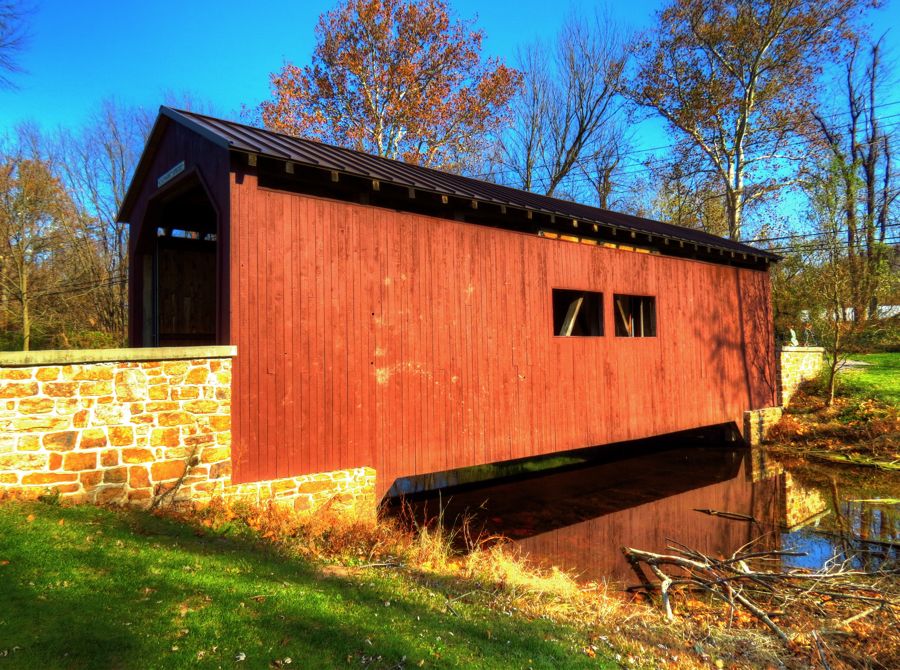
This abutment seemed like a nice warm place for the Official Fort Hunter Covered Bridge Cat to enjoy on a sunny day.
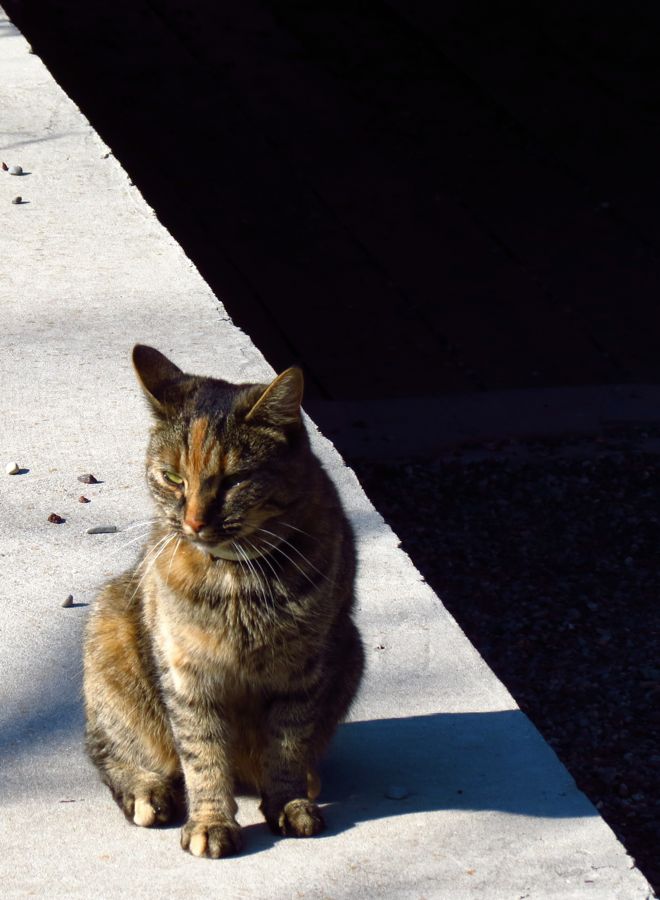
The land at Fort Hunter had been settled by the Susquehannock Indians roughly 1,000 years ago, and they had established a large farming community here. Although the early history is a bit sketchy, an Indian couple named Carondawana and Madame Montour lived here—yes, the same extraordinary woman I wrote about in The Mystery of Madame Montour. In 1710, when Madame Montour became an interpreter for Robert Hunter, the governor of New York, her husband Carondawana adopted the name "Robert Hunter" to honor the governor. This may be the origin of the name for the subsequent Fort Hunter.
In 1725, the Native American couple sold their land to four brothers from Ireland: Benjamin, James, Joseph, and Robert Chambers. Benjamin and James would later found Chambersburg, PA, but Joseph remained by the Susquehanna River and built a mill. After his death, his widow married Samuel Hunter (no relation, I believe, to either Carondawana or the governor of New York). The mill and other buildings were fortified in about 1755 and became part of the string of forts established by George Washington for defense of British settlers during the French and Indian Wars. Although little is known about the fort, and there are no remnants of it, It may have looked like a smaller version of the nearby Fort Augusta.
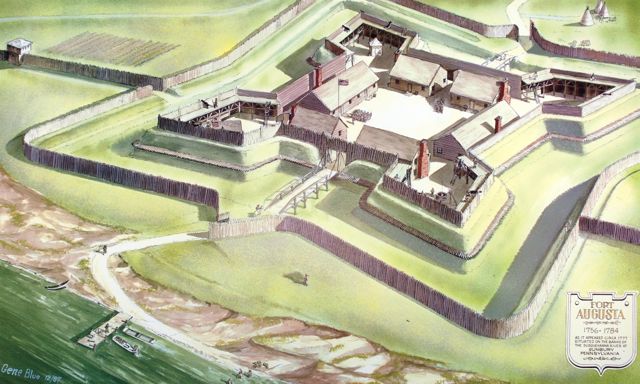
The fort was a communications and trading center during the Indian Wars but was quickly abandoned once hostilities had ceased. Following the Revolutionary War, Archibald McAllister bought the property and built a prosperous plantation starting in 1787. Since he used stone for most of the buildings, a number of them have survived the ensuing 225 years in good shape, and they are now the feature attractions of the state park. This stone stable was built in 1810. (Historical photo courtesy of Fort Hunter Park.) In contrast to the typical German "bank barns" of Pennsylvania, this English-style stable is not built into a hillside; moving hay or other supplies into the upper story required hoisting.


McAllister built the original Tavern House in the late 1790s, and major additions and modifications ensued in 1810 and 1870. Since the main road passed right through Fort Hunter, Archibald figured that a tavern could generate significant income, and it gave him an outlet for his brewery. "Cider Royal" was apparently quite a favorite.

The jewel of the park is McAllister's mansion, originally constructed in 1786 as a two-story stone cabin with two large rooms on each floor. The front part of the mansion, shown here, was added in 1814, in the Federal style. New owners in 1870 added the front porch and other changes that gave the mansion more of the look of an Italian villa. (Historical photo and architectural drawings courtesy of the Library of Congress.)



As can be seen from the drawings, the original cabin now forms the middle part of the structure, with the 1870 summer kitchen at the rear.

As luck would have it, the mansion was open for tours on the day of my visit. The entranceway featured these portraits (at top) of Archibald McAllister and his wife Elizabeth in 1816.

The interior of the mansion is beautifully furnished, and many of the furnishings are original.




This extraordinary cantilevered stairway wound all the way from the first floor to the third. The door in the background leads into the "cabin" section of the home.

If you have to ask what this is, then you don't really want to know!

The Pennsylvania Canal was built in about 1827—right through the middle of Fort Hunter, dividing the property into two halves and creating havoc with the water system that powered the plantation's mills. Archibald McAllister's distillery, grist mill, saw mill, and other businesses began losing money, and he was forced to mortgage Fort Hunter and sell off many of his possessions—including, it must be said, the several African American slaves that he owned. One of them, a woman named Sall Crage, had been at the plantation since age 14. In 1828, at age 62, she ran away to escape a life with a new owner. I could not find any further information about Sall. Following Archibald's death a few years later, Fort Hunter was put up for sale. His son, John Carson McAllister, managed to put together a consortium of investors to buy the place, and he continued to operate the businesses until his death in 1866 (helped by an eventual settlement for financial damages from the Pennsylvania Canal).
Daniel Dick Boa, a successful lumber dealer, bought the property. His daughter Helen grew up in Harrisburg and at Fort Hunter and eventually married John W. Reily. This photo shows Helen's wedding portrait and her wedding dress, from 1887.

Fort Hunter is situated on top of a hill overlooking the Susquehanna and thus offers quite a nice view of the river where it carves through the Appalachian Mountains.


This German-style bank barn was built by Daniel Dick Boa in 1876 and was the center of Fort Hunter's dairy operations for decades.

In the lower section of the barn, I was pleasantly surprised to discover a roomful of bluegrass pickers and singers, having a great ol' time. If I'd had a guitar with me, I might never have completed the tour! (Whether I could have persuaded the group to join me in House of the Rising Sun or Wipe Out is an open question.)

Having spent far longer than I intended at Fort Hunter, it was time to move on. I stopped at Rush Township to get a picture, just for Neil, Geddy, and Alex, but there actually wasn't a whole lot to see. (At least it was scenic.)


A little further on, and just past Stone House Road, I found an abandoned stone house. Who would have guessed?

Outside of Tower City, PA, I stopped for a photo of this more recently abandoned home…
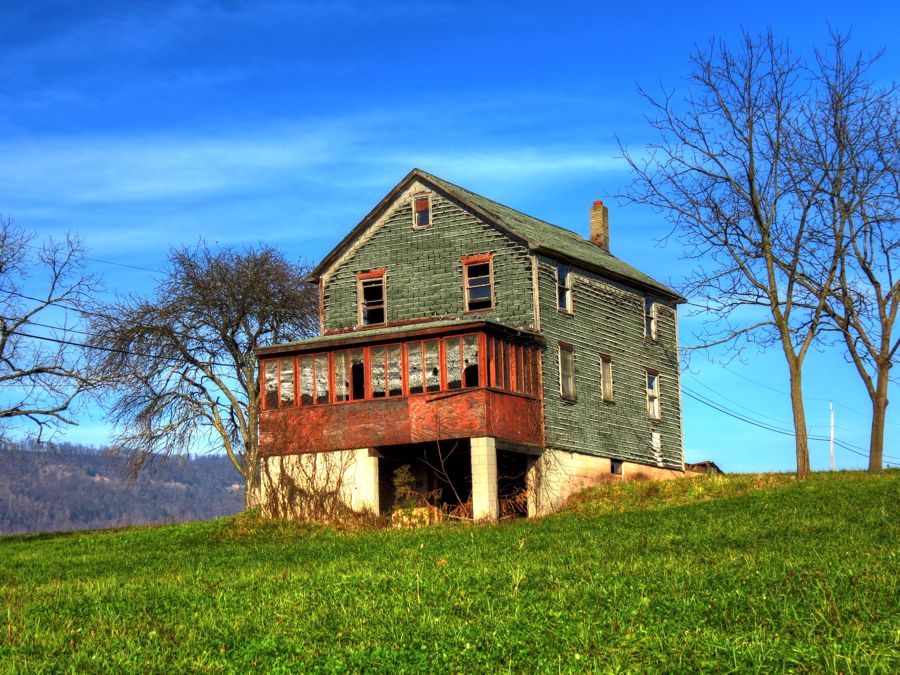
…and was promptly greeted by truck after truck of happy kids, celebrating a season championship of Pee Wee Football!

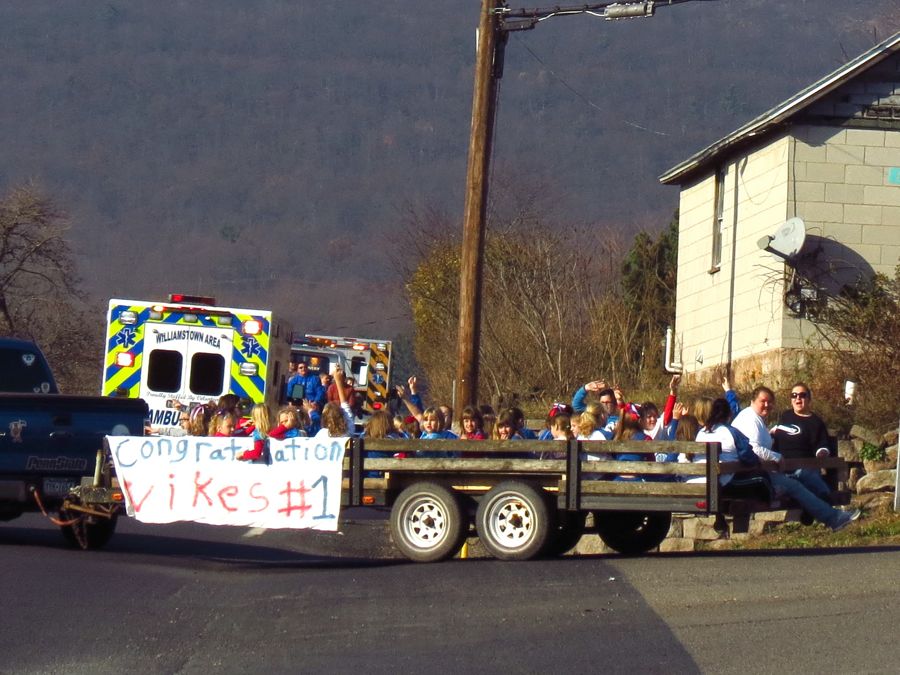
I managed to get to Tower City by an alternate route, since the parade was moving at approximately 2 miles per hour. There I found (yet another) abandoned stately mansion. This one had apparently been converted to an automotive business at some time or another. Very odd, even by Pennsylvania standards.

The S S Peter & Paul Chapel looked to be in first-rate condition, despite being well over 100 years old.

As usual, with the daylight growing scarce, it was time to draw more heavily on the Z4's 215 horsepower and to get to my remaining destinations. Of course, the Z4 is always ready and willing, and after a few buzzes to 6,500 rpm I found myself on Gold Mine Road, winding and twisting through the mountains near Fort Indiantown Gap and Swatara State Park. The Z4 positively lives for moments like these (as do I), when one can reasonably engage its cornering power, willing engine, and powerful brakes. The road was well-paved, entertaining, and virtually free of any other traffic. A good time was had by all.
My next goal was to find the Swatara Iron Furnace in Pine Grove Township. With daylight fading, I gave the Z4 a rest and hiked a short distance along Mill Creek.

I soon encountered the furnace, which appeared to be unchanged from its last use in about 1860. (Historical photo courtesy of Penn State University.)


The furnace was built in 1830 and is about 29 feet square at the base and 22 feet high. The rather crooked photo below helps put its size in perspective (I'm 6' 6" tall; the photo is crooked because my photographic assistant, being a small rock on the hillside, couldn't see straight.) The iron furnace was built by Dr. George N. Eckert and Simeon Guilford, and they soon added a forge and foundry. Back in the day, the "Swatara Cast Iron Stoves" built here were considered the finest in the country.

The iron business seems to have been just a sideline for Dr. Eckert and Mr. Guilford. The latter was primarily a canal engineer. Dr. Eckert started his career as a physician, became a coal and iron baron, and later went on to become a member of the 30th Congress of the United States. There, he became friends with then-Representative Abraham Lincoln. He later wrote the following warning to President Lincoln about one Simon Cameron: "He is corrupt beyond belief. He is rich by plunder—and can not be trusted any where." (Regular readers will remember Simon Cameron from my last trip report, Coal Country and the Occasional Fall Colors. Cameron, despite the warning, became Lincoln's first Secretary of War—and had to resign under suspicion of graft only a year later.)
Dr. Eckert also served as the Director of the U.S. Mint in 1851-1853. During this time, the California Gold Rush resulted in a substantial increase in the nation's supply of gold. As gold became less expensive, relative to silver, the existing silver coins in circulation could be melted down and sold for significantly more than their face value. By using the proceeds to acquire more silver coins, the process could be repeated indefinitely, with steadily increasing profits—and as a result, nearly all silver currency disappeared within months. Dr. Eckert persuaded a reluctant Congress to allow the Mint to issue silver coins that contained less silver. To distinguish the new coins from the old, he had the new ones minted with little arrows on either side of the year. His quick action brought the currency crisis to an end. As best I can tell, there are no portraits or photographs of Dr. Eckert—but he may have looked like his brother Isaac, shown below.


Meanwhile, back to the Pine Grove Township. As I walked back to the Z4, I spotted this little log cabin across Mill Creek. What it was used for remains a mystery.
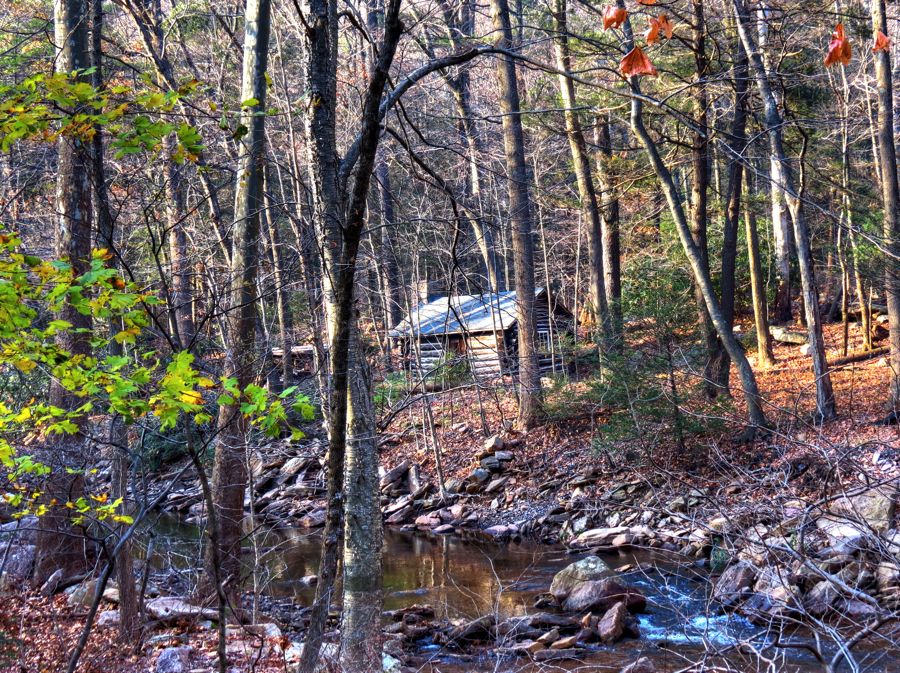
I also saw the ironmaster's mansion from a great distance. My good fortune for the day continued, when the caretaker for the mansion happened along and invited me to go with him to the house for some photographs! The two-story portion of the mansion, to the left in this photo, was built in 1830. The larger, three-story portion was added in 1860. The porch and veranda came along in 1881, when Mahlon Boyer purchased the property. Mahlon had been a miner during the aforementioned California Gold Rush, but later made a fortune in timber. His descendants owned the ironmaster's house and property for many years.

By now, the sun was very low on the horizon—but it really lit up the 1860 barn on the mansion property.

With one more stop in mind, I rushed off to find Swatara Creek, which separates Swatara State Park from Interstate 81. With no time to spare, I naturally stopped almost immediately to get a shot of this classic "haunted house." Where's Halloween when you need it?

I managed to arrive at the creek just as the last of the light was disappearing. There, I found this lock, which was part of the old Union Canal (built by Simeon Guilford, as it happens).

But my real goal was the 1890 Waterville Bridge. In yet another instance of Movable History, this bridge had been relocated here from Waterville, PA, where it used to carry Route 44 across Little Pine Creek. By 1980, however, the single-lane bridge could no longer handle the volume of cars and trucks. Moreover, various collisions had occurred over the years between vehicles and the bridge's trusses—without subsequent repair to the latter—and the bridge's structural integrity was in doubt. Because its rare "lenticular" (lens-like) design qualified the bridge for historic preservation, the Highway Department looked for an alternative use. At the same time, Swatara State Park was being developed, and a means of routing the famous Appalachian Trail over Swatara Creek was needed. Perhaps surprisingly, the two different departments of the State government managed to identify each other's needs, and the Waterville Bridge was moved to its current location in 1985. Sharp-eyed readers may note that the bridge is painted in different colors. Following the recommendation of the original designer, compression sections are painted dark grey, and tension sections are light blue-grey. Who knew?

From the bridge, it was time to punch "Home" into the Zumo GPS and follow its 112 miles worth of instructions back to Catonsville. With stops for Z4 and Rick F. fuel, I arrived at 7:10 PM, tired but full of enthusiasm for another great BMW outing. What's in your neck of the woods? Find out and let us know!
Rick F.





 )
)